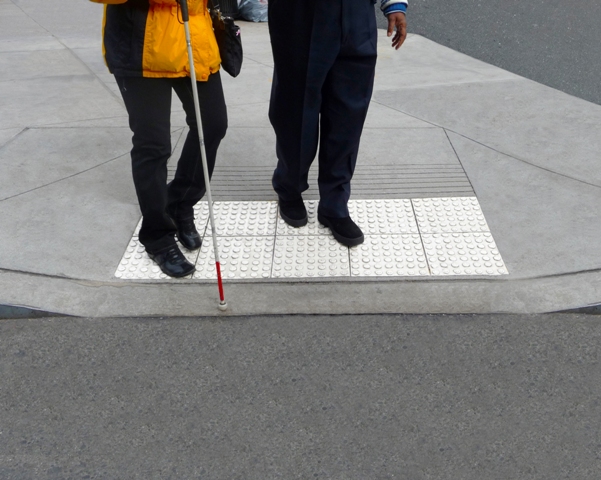|
Interactive Accommodation Process
The interactive accommodation process, or simply interactive process, refers to the Collaboration, collaborative effort involving an employer and employee to determine if the employee can return to work subsequent to an Work (human activity), occupational or non-occupational injury, disease or disorder (medical), disorder. The process typically involves a face-to-face meeting with the employee and representatives for the employer (usually a human resources or risk management representative). The parties bring various ideas to the table regarding whether the employee can be accommodated in returning to their usual and customary (U&C) position or some other type of work. The parties may agree that a certain aspect of the U&C position can be modified, or alternative work found, to accommodate the employee's change in capacity. Americans with Disabilities Act (1990) The Americans with Disabilities Act of 1990 mandates that all employers must engage in an interactive process to determ ... [...More Info...] [...Related Items...] OR: [Wikipedia] [Google] [Baidu] |
Collaboration
Collaboration (from Latin ''com-'' "with" + ''laborare'' "to labor", "to work") is the process of two or more people, entities or organizations working together to complete a task or achieve a goal. Collaboration is similar to cooperation. Most collaboration requires leadership, although the form of leadership can be social within a decentralized and egalitarian group.Spence, Muneera U. ''"Graphic Design: Collaborative Processes = Understanding Self and Others."'' (lecture) Art 325: Collaborative Processes. Fairbanks Hall, Oregon State University, Corvallis, Oregon. 13 April 2006See also. Teams that work collaboratively often access greater resources, recognition and rewards when facing competition for finite resources. Caroline S. Wagner and Loet Leydesdorff. Globalisation in the network of science in 2005: The diffusion of international collaboration and the formation of a core group.'' Structured methods of collaboration encourage introspection of behavior and communication ... [...More Info...] [...Related Items...] OR: [Wikipedia] [Google] [Baidu] |
Employer
Employment is a relationship between two parties regulating the provision of paid labour services. Usually based on a contract, one party, the employer, which might be a corporation, a not-for-profit organization, a co-operative, or any other entity, pays the other, the employee, in return for carrying out assigned work. Employees work in return for wages, which can be paid on the basis of an hourly rate, by piecework or an annual salary, depending on the type of work an employee does, the prevailing conditions of the sector and the bargaining power between the parties. Employees in some sectors may receive gratuities, bonus payments or stock options. In some types of employment, employees may receive benefits in addition to payment. Benefits may include health insurance, housing, disability insurance. Employment is typically governed by employment laws, organisation or legal contracts. Employees and employers An employee contributes labour and expertise to an en ... [...More Info...] [...Related Items...] OR: [Wikipedia] [Google] [Baidu] |
Work (human Activity)
Work or labor (or labour in British English) is intentional activity people perform to support the needs and wants of themselves, others, or a wider community. In the context of economics, work can be viewed as the human activity that contributes (along with other factors of production) towards the goods and services within an economy. Work is fundamental to all societies, but can vary widely within and between them, from gathering in natural resources by hand, to operating complex technologies that substitute for physical or even mental effort by many human beings. All but the simplest tasks also require specific skills, equipment or tools, and other resources (such as material for manufacturing goods). Cultures and individuals across history have expressed a wide range of attitudes towards work. Outside of any specific process or industry, humanity has developed a variety of institutions for situating work in society. Besides objective differences, one culture may o ... [...More Info...] [...Related Items...] OR: [Wikipedia] [Google] [Baidu] |
Injury
An injury is any physiological damage to living tissue caused by immediate physical stress. An injury can occur intentionally or unintentionally and may be caused by blunt trauma, penetrating trauma, burning, toxic exposure, asphyxiation, or overexertion. Injuries can occur in any part of the body, and different symptoms are associated with different injuries. Treatment of a major injury is typically carried out by a health professional and varies greatly depending on the nature of the injury. Traffic collisions are the most common cause of accidental injury and injury-related death among humans. Injuries are distinct from chronic conditions, psychological trauma, infections, or medical procedures, though injury can be a contributing factor to any of these. Several major health organizations have established systems for the classification and description of human injuries. Occurrence Injuries may be intentional or unintentional. Intentional injuries may be acts of ... [...More Info...] [...Related Items...] OR: [Wikipedia] [Google] [Baidu] |
Disease
A disease is a particular abnormal condition that negatively affects the structure or function of all or part of an organism, and that is not immediately due to any external injury. Diseases are often known to be medical conditions that are associated with specific signs and symptoms. A disease may be caused by external factors such as pathogens or by internal dysfunctions. For example, internal dysfunctions of the immune system can produce a variety of different diseases, including various forms of immunodeficiency, hypersensitivity, allergies and autoimmune disorders. In humans, ''disease'' is often used more broadly to refer to any condition that causes pain, dysfunction, distress, social problems, or death to the person affected, or similar problems for those in contact with the person. In this broader sense, it sometimes includes injuries, disabilities, disorders, syndromes, infections, isolated symptoms, deviant behaviors, and atypical variations of stru ... [...More Info...] [...Related Items...] OR: [Wikipedia] [Google] [Baidu] |
Disorder (medical)
A disease is a particular abnormal condition that negatively affects the structure or function of all or part of an organism, and that is not immediately due to any external injury. Diseases are often known to be medical conditions that are associated with specific signs and symptoms. A disease may be caused by external factors such as pathogens or by internal dysfunctions. For example, internal dysfunctions of the immune system can produce a variety of different diseases, including various forms of immunodeficiency, hypersensitivity, allergies and autoimmune disorders. In humans, ''disease'' is often used more broadly to refer to any condition that causes pain, dysfunction, distress, social problems, or death to the person affected, or similar problems for those in contact with the person. In this broader sense, it sometimes includes injuries, disabilities, disorders, syndromes, infections, isolated symptoms, deviant behaviors, and atypical variations of structure and ... [...More Info...] [...Related Items...] OR: [Wikipedia] [Google] [Baidu] |
Human Resources
Human resources (HR) is the set of people who make up the workforce of an organization, business sector, industry, or economy. A narrower concept is human capital, the knowledge and skills which the individuals command. Similar terms include manpower, labor, personnel, associates or simply: people. The Human Resources department (HR department) of an organization performs human resource management, overseeing various aspects of employment, such as compliance with labor law and employment standards, interviewing and selection, performance management, administration of Employee benefits, organizing of employee files with the required documents for future reference, and some aspects of recruitment (also known as talent acquisition) and employee offboarding. They serve as the link between an organization's management and its employees. The duties include planning, recruitment and selection process, posting job ads, evaluating the performance of employees, organizing resu ... [...More Info...] [...Related Items...] OR: [Wikipedia] [Google] [Baidu] |
Americans With Disabilities Act Of 1990
The Americans with Disabilities Act of 1990 or ADA () is a civil rights law that prohibits discrimination based on disability. It affords similar protections against discrimination to Americans with disabilities as the Civil Rights Act of 1964, which made discrimination based on race, religion, sex, national origin, and other characteristics illegal, and later sexual orientation and gender identity. In addition, unlike the Civil Rights Act, the ADA also requires covered employers to provide reasonable accommodations to employees with disabilities, and imposes accessibility requirements on public accommodations. In 1986, the National Council on Disability had recommended the enactment of an Americans with Disabilities Act (ADA) and drafted the first version of the bill which was introduced in the House and Senate in 1988. A broad bipartisan coalition of legislators supported the ADA, while the bill was opposed by business interests (who argued the bill imposed costs on b ... [...More Info...] [...Related Items...] OR: [Wikipedia] [Google] [Baidu] |
Reasonable Accommodation
A reasonable accommodation is an adjustment made in a system to accommodate or make fair the same system for an individual based on a proven need. That need can vary. Accommodations can be religious, physical, mental or emotional, academic, physical, or employment related and are often mandated by law. Each country has its own system of reasonable accommodations. The United Nations use this term in the Convention on the Rights of Persons with Disabilities, saying refusal to make accommodation results in discrimination. It defines a "reasonable accommodation" as: Financial costs Employers and managers are often concerned about the potential cost associated with providing accommodations to employees with disabilities. However, many accommodations, such as moving an employee to a different desk or changing the work schedule, do not have any direct cash costs (56% in a survey of employers conducted by JANJob Accommodation Network (Updated October 21, 2020)Workplace accommodations ... [...More Info...] [...Related Items...] OR: [Wikipedia] [Google] [Baidu] |
Disability
Disability is the experience of any condition that makes it more difficult for a person to do certain activities or have equitable access within a given society. Disabilities may be cognitive, developmental, intellectual, mental, physical, sensory, or a combination of multiple factors. Disabilities can be present from birth or can be acquired during a person's lifetime. Historically, disabilities have only been recognized based on a narrow set of criteria—however, disabilities are not binary and can be present in unique characteristics depending on the individual. A disability may be readily visible, or invisible in nature. The United Nations Convention on the Rights of Persons with Disabilities defines disability as: Disabilities have been perceived differently throughout history, through a variety of different theoretical lenses. There are two main models that attempt to explain disability in our society: the medical model and the social model. The medical model serves ... [...More Info...] [...Related Items...] OR: [Wikipedia] [Google] [Baidu] |





